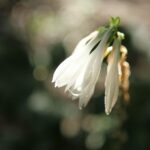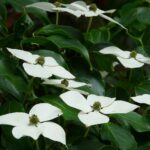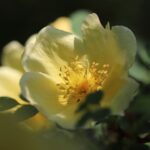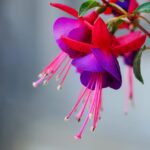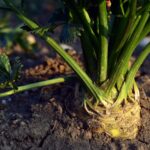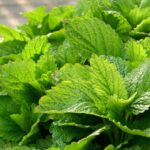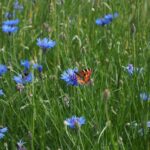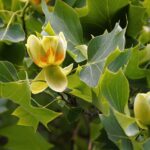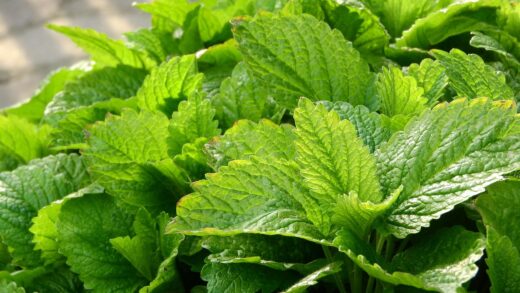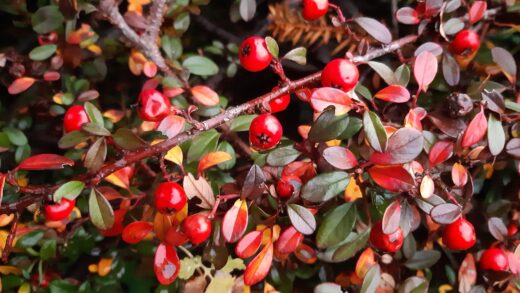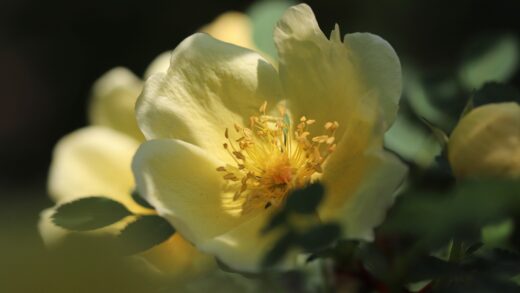The Grayleaf Cotoneaster, scientifically known as Cotoneaster glaucophyllus, is an extremely popular and versatile ornamental shrub, primarily known among garden enthusiasts for its low maintenance and good drought tolerance. Many believe that after planting, it requires almost no care, including irrigation, which is only partially true. For the plant to truly flourish in our garden, it is essential to understand the specifics of its water balance and the correct irrigation practices, which largely depend on the plant’s age, soil type, and climatic conditions. A proper irrigation strategy not only ensures the plant’s healthy development and abundant yield but also contributes to increasing its resistance to diseases.
The excellent drought tolerance of the Grayleaf Cotoneaster is based on several anatomical and physiological adaptations that enable it to use and conserve water more efficiently. The bluish-green, waxy layer covering its leaves, the cuticle, reduces the rate of evaporation, or transpiration, meaning the plant loses less water during hot, sunny hours. Additionally, the Grayleaf Cotoneaster develops a deep and extensive root system, allowing it to absorb necessary water from deeper, moister layers of the soil. These characteristics enable established specimens, which have been in place for several years, to survive long, dry periods without significant damage. However, the plant’s water needs are also significantly influenced by environmental factors.
The structure of the soil fundamentally determines the frequency and amount of irrigation, so knowledge of it is key to establishing the correct practice. Loose, sandy soils have good water drainage, meaning water percolates through them quickly, and they are less able to store moisture. On such soil, the Grayleaf Cotoneaster requires more frequent but smaller amounts of water, especially in the period following planting. In contrast, heavy, clay soils can retain moisture for a long time, which reduces the need for irrigation but also carries the risk of overwatering, which can lead to root rot. The ideal is a well-drained, yet moisture-retentive, loamy garden soil.
Climatic conditions also play a decisive role in the water requirements of the Grayleaf Cotoneaster, as environmental effects directly influence the plant’s transpiration. High temperatures, strong sunlight, and windy weather all increase water loss, so under such conditions, the plant needs more water. In a cooler, more humid microclimate, or in a semi-shady location, the water demand can be significantly lower. It is also important to consider the amount of natural precipitation, as after a heavy rain, it may not be necessary to water for days or even weeks. The gardener’s task is to continuously assess these factors and decide on the need for supplemental watering by observing the plant’s signals.
Irrigating newly planted shrubs
The first one or two years after planting are the most critical period in the life of the Grayleaf Cotoneaster in terms of water supply, as the plant needs time to establish its roots properly. In this initial establishment phase, the root system is not yet extensive or deep enough to draw water from the deeper layers of the soil. Consequently, the young shrub is entirely dependent on the gardener’s care for regular and consistent water supply. Neglecting irrigation during this period can lead to a halt in the plant’s growth and, in more severe cases, its demise, even though the species is considered drought-tolerant.
As a general rule for the frequency and amount of irrigation, the goal is deep, thorough watering, not frequent, shallow sprinkling. In the first year, during the spring and summer months, the newly planted Grayleaf Cotoneaster should be supplied with a generous amount of water once or twice a week, especially during dry, rainless periods. During each watering session, apply enough water to moisten the soil to the full depth of the root zone, about 20-30 centimeters deep. This method encourages the roots to grow downwards, which contributes to a more stable water supply later on and the development of better drought tolerance.
The irrigation technique is also a non-negligible aspect, as an incorrect method can even harm the plant. Always apply the water directly to the base of the plant, onto the soil, and avoid unnecessarily wetting the foliage. A layer of water lingering on the leaves creates favorable conditions for the development of various fungal diseases, such as powdery mildew or leaf spot. The most effective and water-efficient solution is the use of a drip irrigation system or a soaker hose, which deliver water slowly and evenly directly to the root zone. In their absence, a watering can is also perfectly suitable; the key is to water slowly and patiently.
One of the most effective complementary methods for ensuring adequate water supply is soil covering, or mulching. Spreading a 5-8 centimeter thick layer of organic mulch (such as pine bark, wood chips, compost) around the base of the plant on the soil has numerous benefits. The mulch layer prevents the soil from heating up and drying out quickly, thereby reducing water loss through evaporation, and it also suppresses the growth of weeds that would compete with the cotoneaster for water and nutrients. Furthermore, the slowly decomposing organic materials improve the soil’s structure and nutrient content, contributing to the overall health of the plant. This practice is especially recommended for young plants.
Watering established plants
An established Grayleaf Cotoneaster refers to those plants that have been in their location for several years, typically at least two or three growing seasons, and have already developed the deep and dense root system characteristic of the species. At this stage of life, the plant’s water requirement decreases dramatically, and it becomes capable of finding sufficient water from the soil without human intervention in most temperate climates. The extensive root network efficiently collects natural precipitation and accesses water reserves located deeper in the soil. Consequently, caring for an established cotoneaster requires much less attention, and irrigation plays only a supplementary role.
For shrubs with a stable establishment, watering is only necessary in exceptional cases when environmental factors place extreme stress on the plant. Such a situation can be caused by a weeks-long, rainless drought or a prolonged heatwave when the daytime peak temperature consistently exceeds 30-35 °C. In this case, the plant’s transpiration can increase so much that its roots are no longer able to absorb enough water from the drying soil. At such times, a thorough, deep watering can help the plant survive the critical period, preventing leaf wilting and stress-related damage.
It is important for the gardener to learn to recognize the signs of water deficiency in the plant in order to intervene in time before irreversible damage occurs. The very first and most obvious symptom is the drooping or wilting of the leaves, especially during the hottest hours of the day. Other signs of water shortage may include the loss of the leaves’ sheen or glaucousness, browning or drying of the leaf edges, or even premature leaf drop. Observing the plant is crucial, but it is also worthwhile to check the soil moisture content at the base of the plant, a few centimeters deep. If the soil is dust-dry there as well, irrigation is justified.
For an established Grayleaf Cotoneaster, the “less is more” principle applies, and overwatering poses a much greater threat than periodic drought. In constantly wet, waterlogged soil, the roots do not get enough oxygen, creating an ideal environment for root rot-causing fungal diseases, such as Phytophthora infection. This disease leads to the death of the roots, followed by the wilting and death of the entire plant, and it is often irreversible by the time symptoms appear on the above-ground parts. Therefore, well-drained soil and considered, only-when-necessary irrigation are of fundamental importance.
Special considerations and advanced practices
The water requirement of a Grayleaf Cotoneaster grown in a pot or a large container is fundamentally different from that of its counterparts planted in open ground, as its limited root space makes it much more vulnerable to drying out. The amount of soil in a pot is small, so its water-holding capacity is limited, and on hot summer days, the pot’s wall heats up quickly, further accelerating soil dehydration. For this reason, container-grown plants must be watered regularly, even daily during summer heat, even after they are established, ensuring that excess water can freely drain through the drainage holes at the bottom of the pot. Never let water stand in the saucer under the pot.
Grayleaf Cotoneaster is often used to stabilize slopes and steeper areas, where irrigation requires a special technique to prevent water runoff. On a sloped surface, much of the water applied through traditional irrigation simply flows down the surface without having time to penetrate the root zone. An effective solution to avoid this is to create a small basin, a kind of saucer, in the soil around the plants, which collects and holds the water until it slowly seeps in. Alternatively, drip irrigation is also an excellent application here, as the slowly delivered water has time to enter the soil.
The plant’s water demand changes dynamically throughout the year, adapting to seasonal growth cycles, so the irrigation strategy must be adjusted accordingly. The highest water demand occurs during the intensive growth period in spring and the flowering and fruiting period in summer; this is when the most attention must be paid to adequate water supply. In autumn, as the growing season comes to an end, the plant prepares for winter dormancy, and irrigation should be gradually reduced. In winter, the dormant plant generally does not need supplemental watering, except during mild, dry winters, when it may be advisable to water on frost-free days to prevent desiccation.
Although Grayleaf Cotoneaster is generally not sensitive to water quality and thrives with most tap water, in extreme cases, this factor can also play a role in the plant’s health. Overly hard irrigation water with high mineral content can lead to the accumulation of salts in the soil over the long term, which can inhibit the roots’ water uptake. Similarly, collected rainwater is always the best choice, as it is soft and natural. The use of recycled, so-called gray water is possible, but only if it does not contain harmful chemicals, fats, or high salt concentrations that could damage soil life and the plant.

